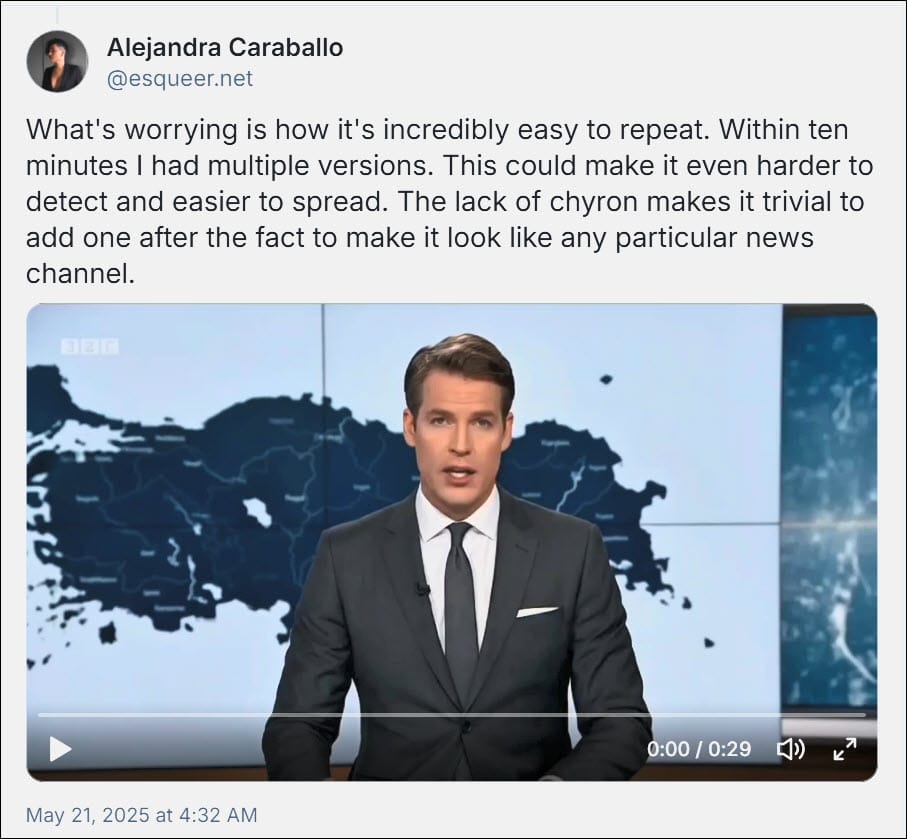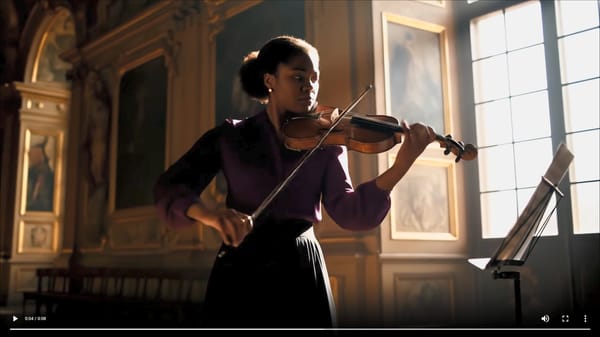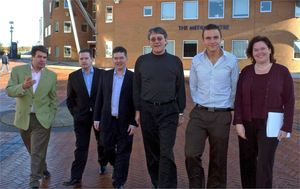At its annual developer conference earlier this month, Google unveiled Veo 3, its most advanced AI text-to-video model yet. On 20 May, Google made a general announcement about Veo3; within minutes, the Internet was buzzing – and for good reason.
Veo 3 doesn’t just generate short animated clips or abstract visuals. It creates photo-realistic, high-resolution videos complete with synchronised audio, including spoken dialogue, background sounds, and music.
The bar for what’s possible with AI video just moved. Again.
What Veo 3 Can Do
Veo 3 is designed to take a short text prompt – say, “a drone shot of a bustling futuristic city at sunset” – and produce a 1080p video clip that looks like it was filmed with professional equipment and with actual people. But this new model does more than visuals. It can simulate physics, generate fluid motion, and synchronise voices with mouth movements, thanks to its integration with Google DeepMind's video and audio generation systems.
Google is pitching Veo as a creative tool for filmmakers, content creators, and marketing teams. And to their credit, the quality is impressive. There’s cinematic framing, believable animation, and an increasingly accurate ability to interpret nuanced prompts.
But it was an example created not by Google but by Alejandra Caraballo that really drove home to me the power (and potential peril) of this tool.
With a simple text prompt, Caraballo created a short video clip showing a female TV newsreader announcing that JK Rowling had perished in a drowning in the Mediterranean Sea after orcas sank her yacht.
It looks like a cable TV news broadcast segment complete with on-screen captions known as chyrons, a presenter, and even the tone and styling of a breaking news alert.
In less than ten minutes, Caraballo had created a number of different versions showing male and female news readers with differing accents, reading the "Breaking News" about JK Rowling.'
At first glance, would you imagine this isn't real? Take a look:

It’s compelling. Such a breaking news story would likely catch your attention, and you may well just amplify it on your social networks. And it’s entirely synthetic.
Why This Is Both Exciting and Concerning
Like many emerging AI tools, Veo 3 offers both incredible promise and real cause for alarm.
✅ The Upside:
- Creative Empowerment: Independent filmmakers and designers can now create scenes and concepts that previously required large budgets (currently, Veo 3 costs from $1,800 per hour on Google Cloud’s Vertex AI platform for enterprise use).
- Faster Content Development: Marketing and comms teams can rapidly prototype ideas for campaigns, explainer videos, or visual storytelling.
- Democratisation of Production: Like generative text before it, Veo 3 lowers the technical barrier to entry – creativity matters more than technical skill.
⚠️ The Risk:
- Misinformation Potential: Videos like Caraballo’s illustrate how easily this could be used to create fake news footage or propaganda that looks entirely real.
- Erosion of Trust: As synthetic media becomes indistinguishable from real footage, how do we trust what we see, especially on social media?
- Ethical and Regulatory Lag: There are still no robust systems in place to watermark or label AI-generated video clearly and consistently.
It’s not difficult to imagine Veo being used to spread disinformation or deceive the public. And as the technology becomes more widely available, those risks will only increase.
A New Creative Frontier – But Not Yet for Everyone
Google has positioned Veo 3 as a powerful, creativity-first tool, and access to it is expanding. On 26 May, the company announced that Veo 3 is available in 71 additional countries via VideoFX.
Notably, from my perspective, the UK is not yet among them. That means creators like me, based in the UK, are still watching from the sidelines for now. While that might reduce immediate risks of misuse in some regions, it also raises questions about how broadly this technology will be adopted and who gets access first.
What if Jurassic Park was real? This is 100% Veo 3 / via @minchoi on X
The reality is that the AI video arms race is accelerating. As with OpenAI’s Sora and Runway’s Gen-3 Alpha, tools like Veo are shaping up to be a defining feature of the new media landscape. The challenge is to keep pace – ethically, creatively, and critically – wherever you are in the world.
At the moment, Veo 3 is a leap ahead of all others.
In our For Immediate Release podcast episode 466, published on 26 May, Shel and I discussed Veo 3. We touched on this "creative frontier" idea a lot, as we did with the pros and cons presented. Our conversation on this topic starts at about the 12-minute mark.

To watch the video version, visit the episode show notes page on the podcast website, where you'll also find the verbatim transcript.
Final Thoughts
For communicators and digital strategists, the key challenge ahead is understanding how these tools will reshape storytelling and media, and developing ethical frameworks before this really takes off. That may be wishful thinking, though, given the light speed at which all this is travelling.
As is often said, "The tools are neutral. It’s how we use them that matters." I'm not sure if such a black-and-white view is valid any more.
Have you experimented with Veo 3 yet? What excites or concerns you most about this technology? I’d love to hear your thoughts, especially as we move into an era where “seeing is believing” no longer holds up.




















